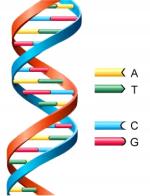|
This section contains 3,117 words (approx. 11 pages at 300 words per page) |

|
IN THE LAST decade of the twentieth century, DNA evidence was used with increasing frequency to link criminals with their crimes. The success of this tool of criminal justice also fueled its continuing development. Law enforcement officials became more skillful at negotiating the twists and turns of DNA evidence. By the end of the decade, DNA information was computerized and standardized throughout the United States, making it hard to escape its reach. Today DNA is an indispensable tool for solving crimes both old and new.
DNA gains acceptance
With each new success, DNA identification gained acceptance. By 1992, the credibility of DNA evidence was so strong that a rapist was convicted even though the victim insisted that her attacker was someone else. Carol Sanders, then twenty-eight, lived with her seven-year-old daughter in Baltimore, Maryland. One hot summer night in 1990, Sanders was awakened by...
|
This section contains 3,117 words (approx. 11 pages at 300 words per page) |

|




